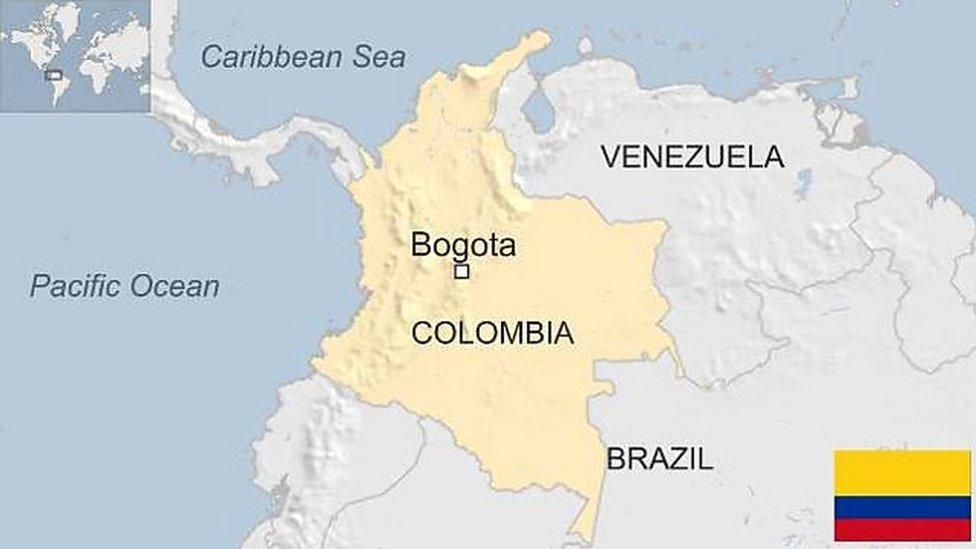Timochenko, the guerrilla leader who talks peace
- Published
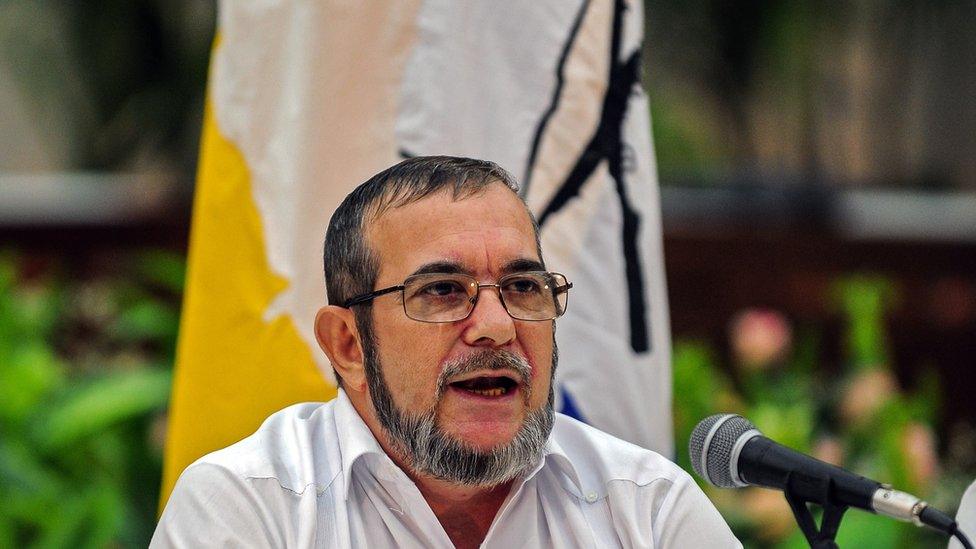
Timochenko was responsible for some of the Farc's most deadly acts
When the self-proclaimed Revolutionary Armed Forces of Colombia announced that Rodrigo Londono would be their new leader, there was uncertainty over his stance on a possible peace process with the government.
Rodrigo Londono, better known under his alias of Timoleon Jimenez or Timochenko, had not been as publicly visible as other members of the organisation but his actions were amongst the bloodiest and deadliest carried out by the Farc.
The kidnapping of a government minister, the bombing of a social club and the murder of a governor were among the acts attributed to the Farc group led by Timochenko.
Timochenko has played a pivotal role in the process that has led to the government and the rebels reaching a historic peace agreement to end more than 50 years of conflict.
Early days
Timochenko was born in Calarca, a small town in the Quindio region, to a low-income family that sympathised with communist ideals.

While attending the peace talks in Cuba Timochenko has become a bit of a baseball fan
While he was still at school, he joined the communist youth and later travelled to the former USSR for education.
Some reports say he became a doctor in former Yugoslavia, but contrasting reports say he received military and intelligence training instead.
He joined the Farc in 1982 and became known as Timochenko in honour of Semyon Timoshenko, a prominent Soviet official who fought the Nazis in the Second World War.
In 1986, Timochenko's tough stance and his talent to maintain order among his fighters earned him a seat on the Farc secretariat, its ruling body.
He was the secretariat's youngest member.
Rise to prominence
The Farc divides its forces into regional groups, called blocs.
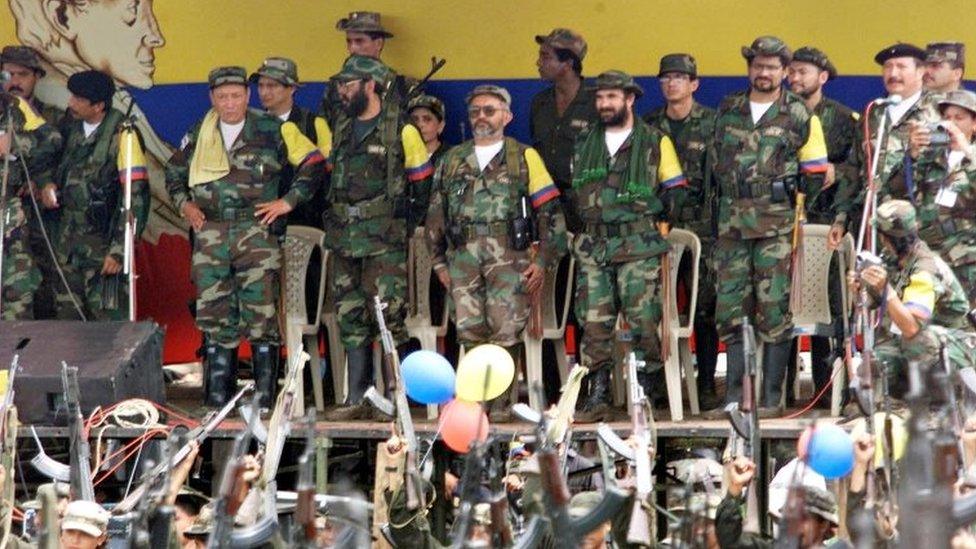
Timochenko (third from right) has been among the Farc leadership since he was young
Timochenko became the head of the Magdalena Bloc in 1993, the first such group which started expanding its attacks to cities as well as rural areas.
His role in the Farc's drug business earned him an Interpol red notice as well as a place in the US Department of Justice's list of "narcotics trafficking kingpins".
In 2008, Timochenko's image became ubiquitous when he appeared in a video announcing the death of the Farc's leader, Manuel "Sureshot" Marulanda.
In November 2011, the Colombian armed forces killed Marulanda's successor, Alfonso Cano.
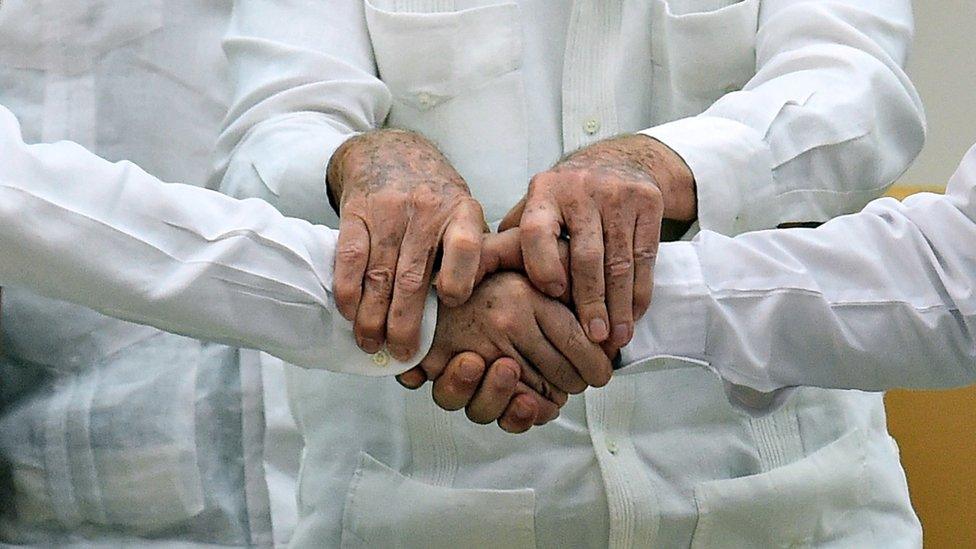
The handshake between President Juan Manuel Santos and Timochenko in 2015 at peace talks in Havana was a momentous event
The Farc secretariat named Timochenko as the new leader of the organisation.
In 2012, in letters published by media friendly to the rebels, Timochenko expressed a renewed will to discuss "vital issues" with the government and hinted at his willingness to enter into peace negotiations.
In November of that year, the government and the Farc announced they would start new peace talks in Havana.
After four years of negotiations, the two sides reached a peace agreement, only for it to be rejected by the Colombian people in a popular vote.
Timochenko and his fellow negotiators went back to the drawing boards and revised the agreement to make it more acceptable to those who had voted "no".
The revised agreement, signed on 24 November, will not be put to a referendum but sent to Congress for approval.
Its implementation and making sure Farc rebels stick to the deal they signed up for will be next challenge waiting for Timochenko.
BBC Monitoring, external reports and analyses news from TV, radio, web and print media around the world. You can follow BBC Monitoring on Twitter , externaland Facebook, external.
- Published22 June 2016
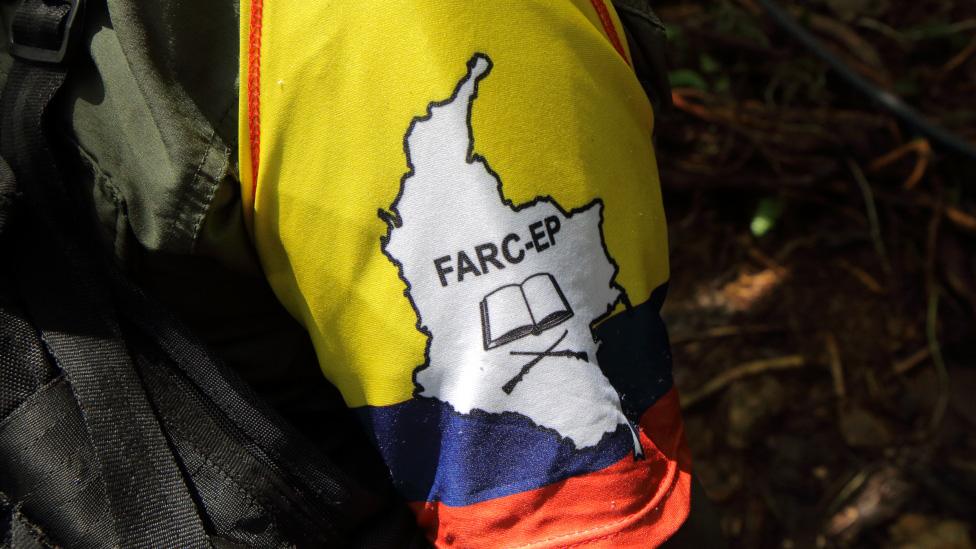
- Published14 February 2023
